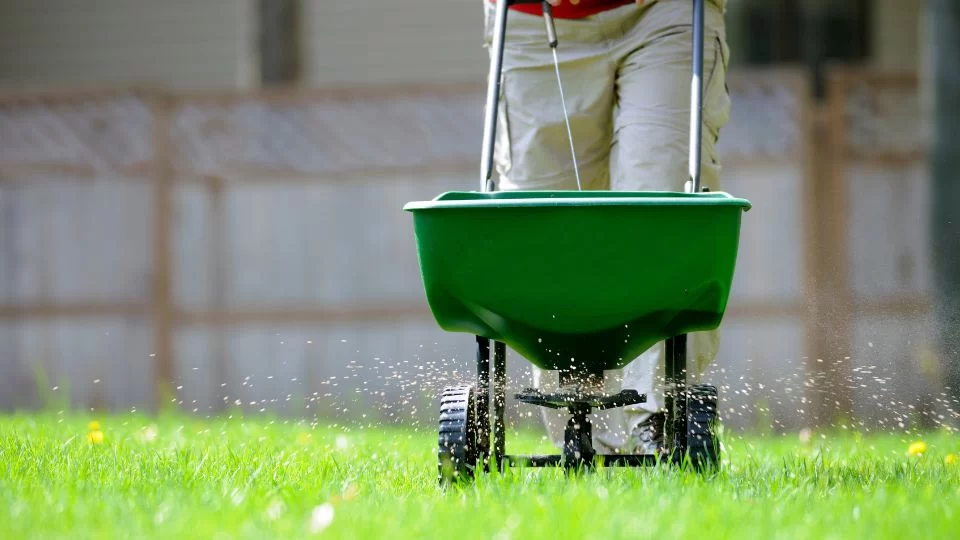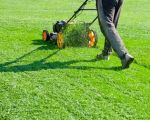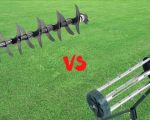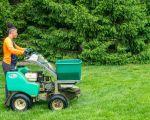
- Best-Time-to-Apply-Lawn-Fertilizer
- Understanding-Lawn-Fertilizer-Types
- Seasonal-Considerations-for-Fertilizing
- Practical-Tips-for-Optimal-Fertilizer-Application
- Real-Life-Experience-with-Fertilizer-Timing
- Where-to-Find-Expert-Lawn-Care-Products
Best Time to Apply Lawn Fertilizer
Knowing the best time to apply lawn fertilizer is crucial for maintaining a healthy, vibrant lawn year-round. Fertilizer provides essential nutrients like nitrogen, phosphorus, and potassium that promote strong root growth, lush green blades, and disease resistance. However, timing plays a pivotal role — applying fertilizer too early or too late can reduce effectiveness or even harm your lawn.
Generally, the optimal times fall during the early spring and early fall seasons when grass is actively growing and can absorb nutrients efficiently. During these periods, the soil temperature is warm enough for root activity but not so hot that fertilizer stress can occur. For cool-season grasses, fertilizing in early spring (once the ground thaws) and early fall is ideal. Warm-season grasses benefit most from fertilization in late spring through summer when they grow vigorously.
Applying fertilizer at the wrong time, such as mid-summer during extreme heat or winter dormancy, can lead to nutrient runoff or promote weak growth. Thus, identifying the correct timing aligned with your grass type and climate zone will maximize lawn health and reduce waste.
How Grass Type Influences Fertilizer Timing
Cool-season grasses like Kentucky bluegrass, fescues, and ryegrass thrive in cooler temperatures and benefit most from fertilizer in spring and fall. Conversely, warm-season grasses such as Bermuda, St. Augustine, and zoysia grass have their peak growing season in summer, making late spring through summer the best fertilizer window.
Adjusting the fertilizer schedule according to your grass type ensures nutrients are available when roots can absorb them effectively, avoiding stress periods for the lawn.
Understanding Lawn Fertilizer Types
Before diving into timing, it’s essential to understand the types of lawn fertilizers and how they interact with your lawn’s needs. Fertilizers can be broadly categorized into:
1. Slow-Release Fertilizers
Slow-release fertilizers deliver nutrients gradually over weeks or months, promoting steady growth and reducing the risk of burning the grass. These are excellent for maintaining long-term lawn health and require fewer applications.
2. Quick-Release Fertilizers
Quick-release fertilizers provide an immediate nutrient boost, often used to revive stressed or yellowing lawns quickly. However, they carry a higher risk of burning and require careful timing and watering.
3. Organic Fertilizers
Organic options improve soil health naturally by enriching microbial activity and releasing nutrients slowly. Though slower acting, they contribute to sustainable lawn care and reduce chemical runoff.
Choosing the right fertilizer type to apply at the best time complements your overall lawn care strategy and enhances nutrient uptake efficiency.
Seasonal Considerations for Fertilizing
Seasonality deeply influences when fertilizer application will be most effective. Let’s break down seasonal insights to guide your lawn care calendar:
Spring Fertilizing
Early spring fertilization revitalizes the lawn after winter dormancy. Nutrients supplied during this period support new root development and prepare the grass for the growing season. It’s best to fertilize once the soil temperature consistently reaches about 55°F (13°C).
Summer Fertilizing
Summer fertilization requires caution. Heat stress can make the lawn vulnerable to fertilizer burn, especially with quick-release types. If necessary, light applications of slow-release fertilizers are preferable, ideally early morning or late evening, coupled with adequate watering.
Fall Fertilizing
Early fall is often considered the most important fertilizing time for cool-season grasses. The soil remains warm, roots are still active, and the cooler air temperatures encourage vigorous growth without heat stress. Fertilizer at this time helps build nutrient reserves for winter survival and early spring green-up.
Winter Fertilizing
Generally, winter fertilization is not recommended because most lawns enter dormancy and cannot absorb nutrients efficiently. Fertilizer applied during this time is often wasted or can contribute to nutrient runoff.
Practical Tips for Optimal Fertilizer Application
Timing is only part of the equation — how you apply fertilizer impacts results just as much. Consider these practical tips to maximize your lawn’s benefit:
1. Follow Soil Test Recommendations
Soil testing provides insight into your lawn’s nutrient needs, preventing over- or under-fertilization. Many local extension services offer affordable testing that can tailor your fertilizer plan precisely.
2. Water After Fertilizing
Proper watering helps dissolve fertilizer granules, enabling nutrients to penetrate soil and reach roots. Avoid applying fertilizer before heavy rain to reduce runoff risks.
3. Use Proper Equipment
Spreading fertilizer evenly with a broadcast or drop spreader ensures consistent nutrient distribution, preventing patchy growth or burning.
4. Avoid Overfertilizing
More fertilizer doesn’t always mean a better lawn. Excess nutrients can harm grass, pollute waterways, and increase lawn disease susceptibility.
Real-Life Experience with Fertilizer Timing
One homeowner in Ohio shared their journey toward lawn excellence after years of struggling with patchy grass. Initially applying fertilizer randomly throughout the year, their lawn suffered from inconsistent growth and weed invasion. After consulting with local lawn care experts and learning about the best time to apply lawn fertilizer — focusing on early spring and early fall applications — their lawn’s condition dramatically improved.
They switched to slow-release fertilizer types and used a spreader for even coverage. By sticking to a seasonal fertilizing schedule, they achieved a deep green, thick lawn that became the envy of their neighborhood. This story illustrates how understanding fertilizer timing and proper application can transform lawn care outcomes.
Where to Find Expert Lawn Care Products
For those seeking high-quality fertilizers and expert advice, Lawn Care Services offers a comprehensive selection tailored to your grass type and regional climate. Whether you need slow-release options, organic fertilizers, or application equipment, their specialists can guide you toward the best solutions for optimal lawn health. Leveraging professional resources can save time, money, and frustration while helping you achieve a thriving lawn all year round.








